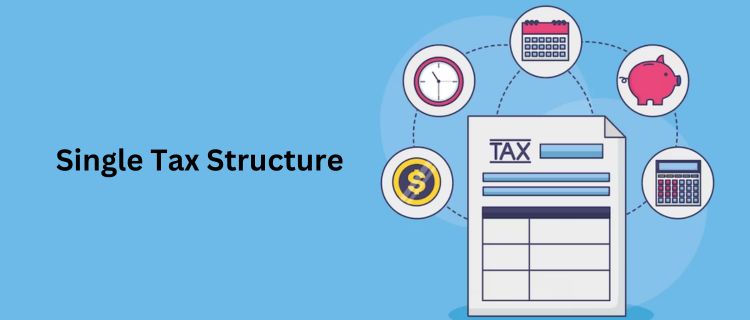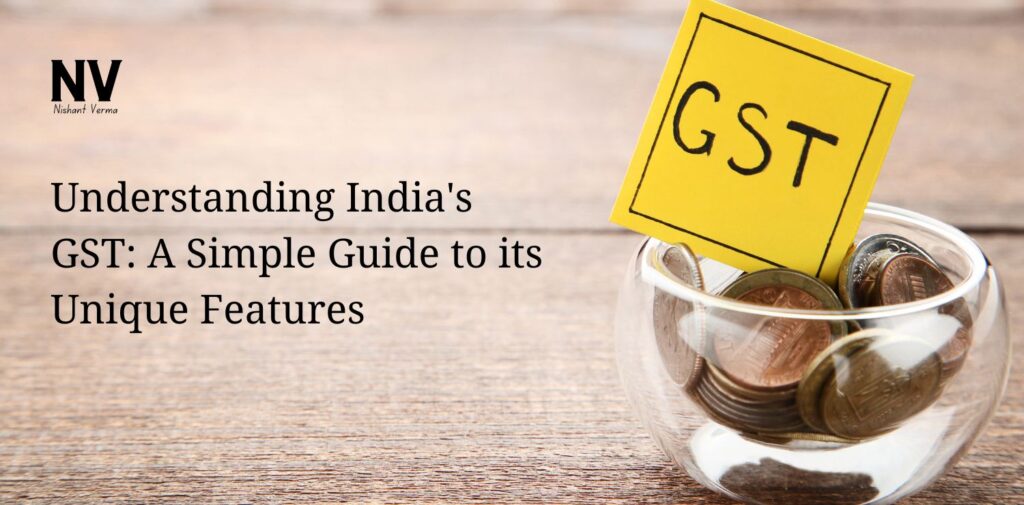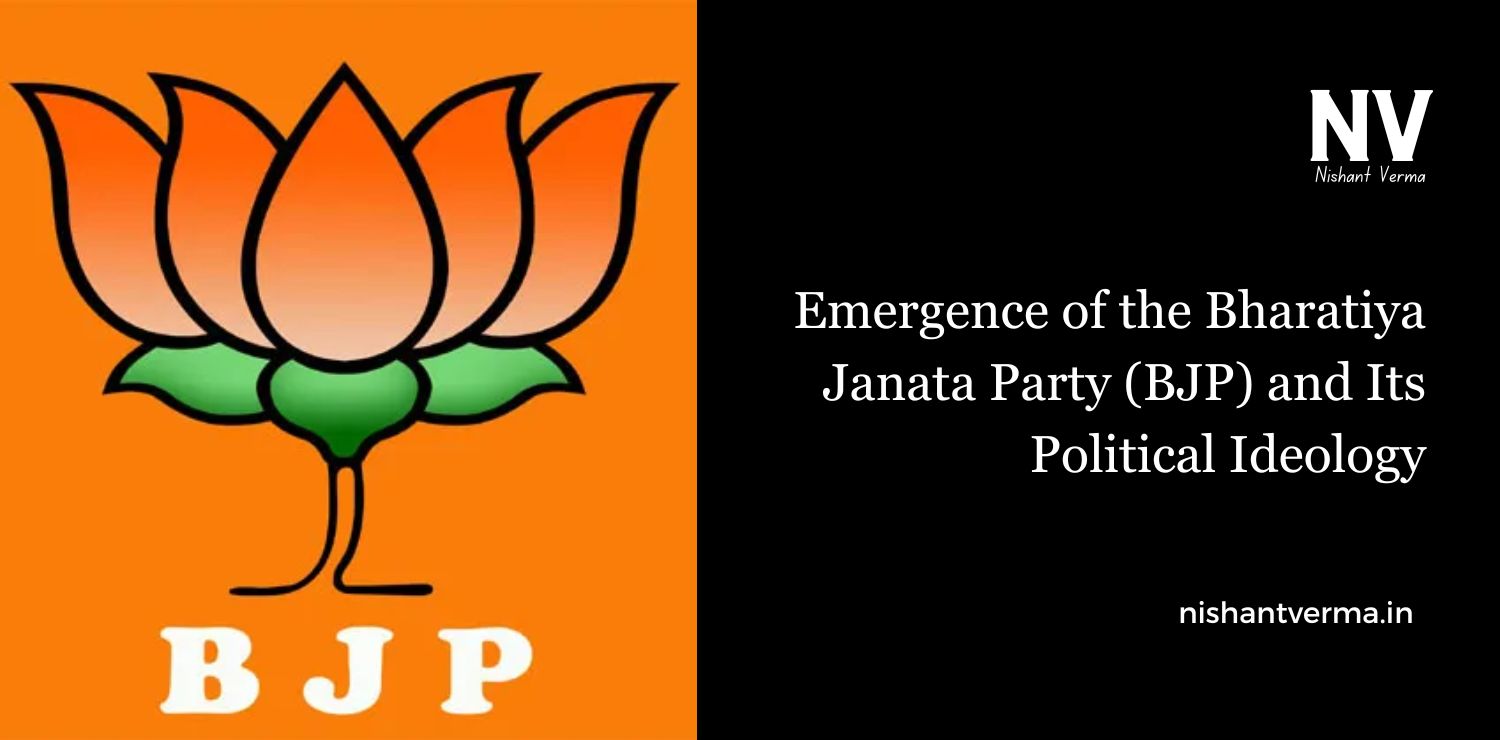Goods and Services Tax (GST) is a tax system used by many countries around the world to simplify and streamline the taxation process. In this article, we’ll explore how India’s GST system differs from that of other countries. We’ll break down the key components of India’s GST, explaining each aspect in simple language to help you grasp the intricacies of this tax system.
Single Tax Structure:
India’s GST system stands out for its single tax structure. Unlike some countries that have multiple tax rates for goods and services, India has opted for a more straightforward approach. Here, the GST rates are categorized into three main slabs: 5%, 12%, and 18%, with a few exceptions at 0% and 28%.
This simplicity helps businesses and consumers alike, making it easier to understand and comply with tax regulations.

Dual GST Model:
Another unique feature of India’s GST system is its dual model, where both the central and state governments have the authority to levy and collect taxes. This means that there are two components of GST: Central GST (CGST) and State GST (SGST).
The advantage of this dual model is that it allows for a fair distribution of tax revenue between the central and state governments, ensuring a balanced fiscal system.
Inclusion of Services: India’s GST system
Unlike some countries that apply GST only to goods, India’s GST system is comprehensive, including both goods and services. This means that services such as telecommunications, hospitality, and professional services are also subject to GST.
The inclusion of services under the GST umbrella ensures a broader tax base, preventing the omission of significant sectors from the tax net.
Threshold Limit for Small Businesses:
India’s GST system considers the interests of small businesses by introducing a threshold limit for registration. Businesses with an annual turnover below a certain amount (as of the last update, it’s 40 lakhs for goods and 20 lakhs for services) are exempt from GST registration.
This threshold provides relief to small businesses, reducing their compliance burden and promoting ease of doing business.
Anti-Profiteering Measures:
To ensure that the benefits of GST are passed on to consumers, India has implemented anti-profiteering measures. The National Anti-Profiteering Authority (NAA) monitors and ensures that businesses reduce prices in response to reduced tax rates.
These measures protect consumers from unjust price hikes and contribute to the overall effectiveness of the GST system.
Electronic Filing and Input Tax Credit:
India’s GST system embraces technology by mandating the electronic filing of returns. This not only reduces paperwork but also enhances efficiency and transparency in the tax administration process.
Additionally, the system of Input Tax Credit (ITC) allows businesses to offset the tax they’ve paid on inputs against their final output tax liability. This mechanism helps prevent the cascading effect of taxes and promotes a more equitable tax structure.

GST Network (GSTN):
The GSTN is a technological backbone that supports the entire GST system in India. It acts as a platform for taxpayers to interact with the GST portal for registration, filing returns, and other compliance activities.
The implementation of GSTN streamlines the tax filing process, making it more accessible and user-friendly for businesses of all sizes.
Reverse Charge Mechanism:
India’s GST system employs a reverse charge mechanism for specific transactions. Under this mechanism, the recipient of goods or services is responsible for paying the tax instead of the supplier.
This mechanism is often applied to transactions involving unregistered dealers, ensuring that the tax is collected efficiently.

Conclusion:
India’s Goods and Services Tax system is designed to simplify taxation while ensuring fairness and transparency. With its single tax structure, dual model, and inclusion of services, India’s GST system has unique features that distinguish it from those of other countries. The threshold limit for small businesses, anti-profiteering measures, electronic filing, and the GST Network contribute to making the system more accessible and efficient. As India continues to evolve its tax framework, understanding the nuances of India’s GST system becomes increasingly important for businesses and consumers alike.
India’s Goods and Services Tax (GST) system is like a simplified rulebook for taxes, making things fair and clear. Unlike complicated systems, India’s GST keeps it simple with just one tax structure, using a dual model that includes goods and services. This unique approach sets it apart from tax systems in other countries.
One special thing about India’s GST is that it’s not only for big businesses but also takes care of small ones. There’s a limit, called the threshold, which means small businesses don’t get burdened with heavy taxes. This helps keep things fair for everyone.
To make sure no one is taking advantage, there are rules against businesses making too much profit from India’s GST system. This is called anti-profiteering, making sure prices stay reasonable.
Technology plays a big role too. Instead of dealing with piles of paperwork, businesses can file their taxes electronically, saving time and effort. The GST Network is like the tech wizard behind the scenes, making sure everything runs smoothly.
As India keeps improving its tax rules, it’s important for both businesses and regular folks to understand how the GST system works. The small details, like helping out small businesses, making sure prices are fair, and using technology, all add up to make India’s GST system easier to deal with and more efficient for everyone. So, as we all move forward, knowing a bit about how this system works can make things smoother for everyone involved.




